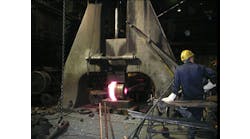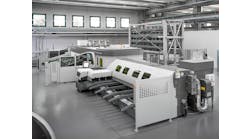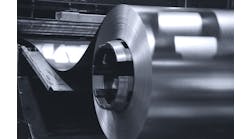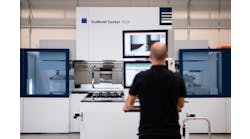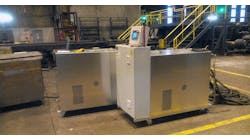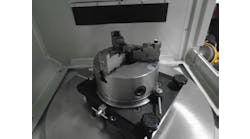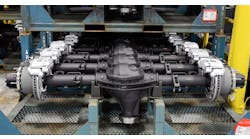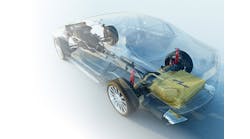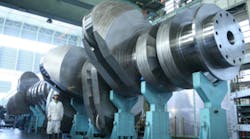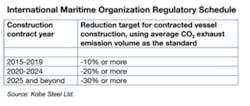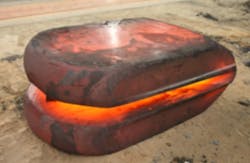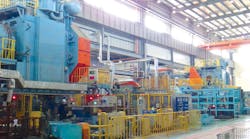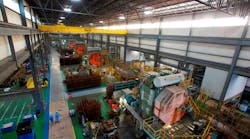Kobe Steel Ltd. has developed a new forging technique for manufacturing large-dimension crankshafts used in diesel marine engines. The process involves die forging to produce near-net-shape components of the crankshaft, which exhibit considerable improvements in fatigue strength compared crankshafts produced by the more standard roll forging method.
Crankshafts can be produced by casting (ductile iron) or machining (specialty steel), but roll forging steel billets has emerged as a preferred method for many engine manufacturers because the finished products are comparatively lighter and the process offers good dimensional control.
Kobe Steel is one of the world’s largest manufacturers of crankshafts, but it’s particular objective in the current development involved crankshafts for marine engines. Specifically, Kobe identified the emergence of “eco-ship” designs, which operate with greater fuel efficiency in order to conserve energy and save operating costs, and to meet stricter environmental regulations.
“Two important points in the development of eco-ships are ship development to reduce drag on the hull, and engine development to improve fuel consumption and lower exhaust gas emissions,” according to Kobe’s announcement.
Typically these news ships use larger propellers that rotate at slower speeds, which means that the low-RPM propellers must achieve higher power output. Thus, long-stroke engines — in which the ratio of the piston stroke to the cylinder-bore diameter is greater, therefore more energy efficient — are growing more popular with ship designers.
The crankshaft is critical to this design, because it links the engine pistons to the propeller. Thus, while it must be lightweight, it must be able to transfer the low-RPM power effectively.
“When long-stroke engines are used,” Kobe Steel noted, “the crank throws are longer and heavier than conventional ones, leading to higher load stress on the crankshaft and higher bearing loads.”
The “throw” is the offset arm on a crankshaft, to which the engine connecting rods attach.
In the new process, Kobe Steel has produced lighter crank throws by pressing heated iron into dies to form the near-net shapes. The resulting crank throws are lighter and more reliable than forged steel throws, and they can be mass-produced, too.
Kobe Steel stated its a new die-forging method draws on its experience as an integrated manufacturer of crankshafts, including steelmaking, forging, machining, and inspection. “Clean steelmaking” technology and the new forming method result in throws that have fewer stress-points than forged parts, so the crankshafts demonstrate 20% greater fatigue strength compared to products manufactured by conventional forging methods.
In addition to developing the new die-forging method, Kobe Steel announced it has developed automatic ultrasonic inspection and numerical inspection technologies for digital evaluation of the parts of the crankshaft that will touch the bearing. “These technologies provide substantial improvement on the reliability of the crankshafts, which endure higher load stress and bearing loads in long-stroke engines,” according to Kobe.

